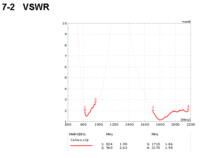Get a carrier that supports both GSM and CMDA, with or without SIM.
That simply does not exist in the US. Carriers are either one or the other - as are the phones.
http://en.wikipedia.org/wiki/List_of_mobile_network_operators_of_the_Americas#United_States
Realistically it comes down to a choice between CDMA and GSM - it's either or.
CDMA has about 186 million subscribers. Verizon, Sprint and US Cellular are the largest companies using CDMA. Smaller carriers (Cricket and similar) also tend to use this. I currently use US Cellular and get solid voice signal everywhere - including my home. Data signal can be touch and go in some areas. So, a CDMA Pyra would in theory have the widest options for carriers.
GSM has about 181 million subscribers. AT&T and T-Mobile seem to be the only ones who use it in the US. However, I understand that GSM is far more popular in Europe.
If only it were that simple though. Each of the companies within the CDMA or GSM sets use different frequency sets and protocols can differ as well. To further complicate matters, tower sharing is relatively rare. So, each provider will have their own towers that service only their own subscribers and subscribers of companies that may have sharing agreements with them. In some areas there will be multiple towers within range, but a given carrier's phone will not connect since they do not have permission to use the towers.
I have a choice in type of contract with most carriers - I can either lock in for 2 years and get subsidized phone prices OR I can pay up front for the phones and pay a lower contract price without being locked in. Either way, though, I'm locked to the technology (CDMA or GSM) used in the phones themselves. With 5 lines and 5 smart phones (Galaxy S5), buying the phones up front at roughly $700 per phone isn't chump change (~$3500). Adding a 6th line for a Pyra to such a plan would only be $10 per month Vs having the Pyra on a plan by itself would be $70 per month.
I want to get this right so that the Pyra can simply be added to the plan and would rather not risk dropping serious cash for one provider's phones then to find out I'd picked the wrong provider.
If I could choose any company's network to have the Pyra work on it would be US Cellular (CDMA), but they're #5 in the US and are only 10% of the size of #4 and would probably not be an option to anyone else outside of the US Midwestern states. If it needs to be GSM, I'd probably go to T-mobile.
I suggest that the project team work this a bit backward for the US mobile phone options. Start by picking a carrier, then tailor the radio & antenna to fit the carrier. Unfortunately there isn't a generic option that would work for all of them.



